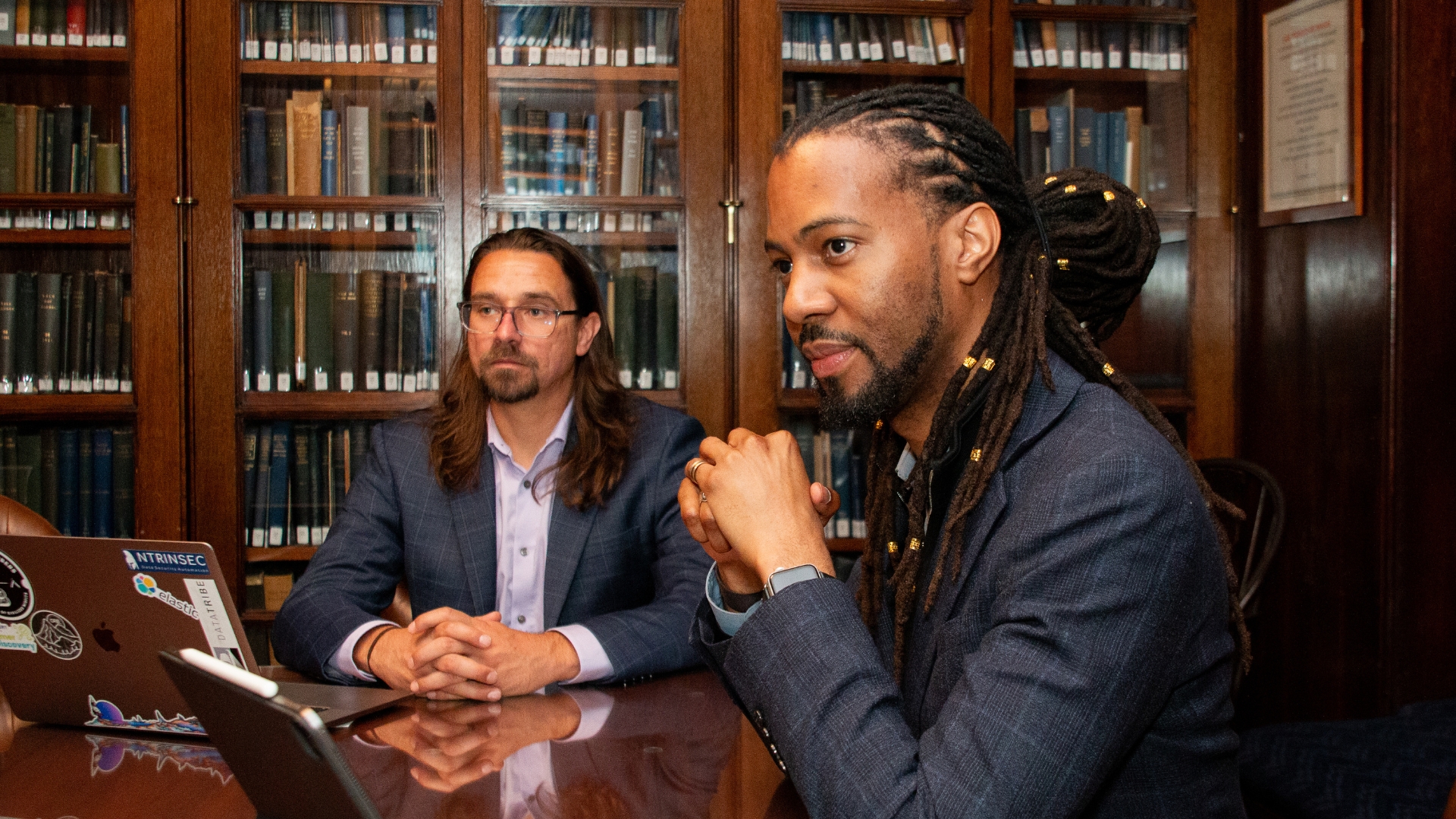Culture is often misunderstood as a warm, intangible concept. It is seen as a “vibe” or emotional atmosphere confined to the HR domain. But in reality, workplace culture is the operating engine of your organization. It is shaped not by intention alone but by the small, consistent choices leaders make every day. From who gets promoted to how meetings are run, leadership culture becomes the scaffolding for cultural norms. This blog explores how these choices quietly define your company culture and offers practical approaches for leaders to shape culture intentionally and sustainably.
The Invisible Power of Leadership Decisions
Leadership decisions communicate. Whether you realize it or not, every choice (and omission) sends a signal about what matters and what does not. Over time, those signals accumulate into norms…
- Who receives visibility and opportunity
At a software company, leadership might only invite Product Roadmap Leads to planning sessions, leaving support or pre-sales engineers. Even when the stated value is “customer focus,” that exclusion signals whose perspective truly counts. - What gets rewarded
If a Solutions Engineering team builds a tool that reduces support load, but only the top salesperson is celebrated, the message is clear: revenue is valued more than infrastructure. And over time, that shapes where others choose to focus their efforts. - What is tolerated or ignored
If a high-billable partner consistently avoids process reviews and leadership overlooks it, the signal is unmistakable: performance takes precedence over accountability.
These implicit messages matter because, as Edgar Schein said, “What troubles me is the misuse of the word culture and the failure of people to see that culture is not this surface phenomenon, but it is our very core. We live in culture, we display a culture, we are always driven by the culture. It troubles me that people don’t see that.” This is where leadership communication becomes a key driver of psychological safety.
Culture by Default vs. Culture by Design
Every organization has a culture. The key difference lies in whether it is shaped intentionally or allowed to emerge passively. That distinction defines the strength and resilience of your workplace culture.
| Culture by Default | Culture by Design |
| Emerges without deliberate effort or ownership. | Built intentionally through aligned systems and behaviors. |
| Values are aspirational but rarely show up in daily practice. | Values are operationalized through visible rituals and decision-making. |
| Inconsistencies go unaddressed; exceptions quietly become norms. | Exceptions are deliberate and rare; behaviors are modeled consistently by leadership. |
| Culture varies by team or manager; no shared rhythm. | Cultural norms are shared, reinforced, and embedded in organizational systems. |
| Employees often feel confused about what’s really expected. | Clarity and consistency help employees trust and engage fully. |
Scenario 1: Communication
A team claims to value transparency, but decisions are made behind closed doors and surfaced after the fact. This results in team members learning not to ask questions. That’s culture by default.
Another team, with the same stated values, introduces a shared decision log, regularly asks for feedback, and holds Q&A forums. That’s culture by design.
Scenario 2: Performance Management
One department allows each manager to define performance criteria differently, depending on personal preference. Hence promotions feel arbitrary, and trust erodes. This is a classic case of culture by default.
Another creates a consistent framework across teams, evaluates both outcomes and behaviors, and trains managers to apply it fairly. This results in employees understanding the path to growth. This is culture by design.


Recognizing which mode you’re operating in is the first step toward building the workplace culture you truly want.
The Cultural Ripple Effect of Everyday Choices
Leadership decisions affect three foundational aspects of team culture:
- How decisions are made
- How communication flows and
- How execution happens
Decision-making
Decision-making Leaders often underestimate the cultural impact of decision protocols. If decisions are not centralized or consistently routed through informal networks, others disengage.
It helps to apply models like RACI (Responsible, Accountable, Consulted, Informed) for clarity. But beyond structure, it’s all about inclusion. As an example: In one firm, engineering and support teams were routinely left out of planning decisions. Once those groups were included, ideas surfaced earlier, and coordination improved.
Communication
How leaders communicate (not just what they say) shapes psychological safety. Amy Edmondson’s research shows that teams perform better when people feel safe to speak up without fear of retribution.
To embed this, leaders must frame work with openness, invite dissent, and respond without defensiveness. One professional services firm introduced anonymous “error review” sessions. That simple change transformed fear of failure into a norm of collective learning.
Execution
If leaders routinely waive rules or reward results without considering process, norms start to fray. As an example: in one organization, leadership bypassed quality checks to meet deadlines. This created a ripple effect. Teams began cutting corners, clients noticed, and revisions ballooned.
To avoid this, some teams embed a short reflection into every output: “Did we uphold our values in how we worked?” This ensures that the process, not just outcome, is reviewed.
When Leadership and Culture Fall Out of Sync
The most damaging cultural tension arises when what leaders say and what they do fall out of alignment. When actions contradict stated values, people stop believing the words and start following the unspoken rules instead. That’s when cultural alignment quietly breaks down.
Consider how this shows up in everyday leadership:
- Leaders say “we collaborate across functions” but override input from other departments.
- Leaders promise “work-life balance” but reward employees for always being available.
- Leaders claim “we promote based on merit” but make exceptions based on relationships.
These moments might seem small, but their ripple effect is measurable. When employees sense inconsistency between stated values and lived behavior, engagement drops — and so does performance.
In fact, Gallup reports that global employee engagement declined by two percentage points in 2024, costing the world economy an estimated $438 billion in lost productivity. Much of that loss stems from disengagement driven by mistrust and cultural misalignment.
The Mechanics of Building Intentional Culture
Culture is not built from inspiration, but built through infrastructure: the repeatable systems, conversations, and cues that reinforce the right behaviors consistently over time. Leaders must become culture designers, embedding values into operational rhythms. This is how intentional leadership is put into practice.

Rituals and Reflection
Recurring ceremonies such as retrospectives, 1:1s, and all-hands meetings should do more than manage work. They should create space to reflect on how the work was done, where values were upheld, and where they slipped. When culture becomes part of the team’s rhythm, it stops being a concept and becomes a system for how work actually gets done.
Decision Documentation with Cultural Context
Leaders can embed values directly into decision-making tools like logs or project kick-off templates by adding prompts such as:
- Who did we consult?
- What trade-offs are we making?
- How does this reflect our values?
This creates transparency and builds muscle memory around inclusive, principle-based choices.
Recognition of Behavior, Not Just Outcomes
Too often, high-visibility results overshadow the behaviors that made them possible. Shift the spotlight: publicly acknowledge those who mentor peers, challenge assumptions constructively, or build bridges across teams. When leaders celebrate these quiet forms of excellence, they show what is truly valued.
Feedback Loops
Culture needs data, but it also needs response. Pulse surveys, skip-levels conversations, and project debriefs reveal where values are breaking down – yet listening alone is not enough. Close the loop: share what was heard, what will change, and what will stay. That follow-through turns feedback into trust and sustains a healthy feedback culture.
Leadership Modeling
Leaders are the most visible carriers of culture. Their consistency; in tone, behavior, and accountability sets the real standard. Modeling means showing vulnerability, being willing to unlearn, and upholding the same expectations they set for others. Quiet consistency does more to shape culture than any campaign or keynote ever could.
Embedding Culture in How Work Gets Done
Building culture intentionally is one thing; embedding it is another. The true test of leadership is whether culture shows up in the moments when no one’s talking about it, like in decisions, routines, and the quiet ways work gets done. When culture becomes part of daily operations, it stops being an initiative and becomes an instinct.

Intentional culture-building isn’t a side project; it’s a system woven into how teams make decisions, communicate, and execute. The more culture is reflected in everyday processes, the more it sustains itself without top-down reminders.
Here’s how to embed it where it matters most:
1. Use onboarding to teach cultural norms, not just logistics.
The first few weeks shape how a new hire understands not just what to do, but how to do it. Leaders should use onboarding to tell real stories, modeled behaviors, and show how decisions are made. Who speaks up? How is feedback handled? These early signals establish what’s truly valued and what “good” looks like in practice.
2. Include cultural health check-ins in team reviews and project close-outs.
Don’t limit reflection to metrics or milestones. Teams should regularly ask:
- Did we make decisions in alignment with our values?
- Were all voices heard?
- What behaviors helped us move forward, or held us back?
These questions anchor culture in the delivery process. They remind teams that culture is not separate from results, but is part of achieving them.
3. Build behavior-based feedback into performance reviews.
Performance reviews are among the most powerful cultural tools leaders have. When feedback includes not only what was achieved but also how it was achieved – through collaboration, resilience, and integrity, it signals that process matters as much as performance. Over time, that balance shapes stronger habits than metrics alone ever could.
4. Normalize reflective questions like, “Did we show up the way we said we would?”
Culture grows through repetition. Leaders can quietly model it by asking small, consistent questions that connect daily work back to shared values:
“Did we show up the way we said we would?”
“What would doing this the right way, not just the fast way, look like?”
These moments don’t need to be formal. Even five minutes at the end of a meeting can shift focus from task completion to shared accountability.
The key message is this: culture becomes sustainable when it no longer relies on reminders or campaigns to stay alive. It becomes the background architecture of every decision, interaction, and output. Leaders who intentionally weave culture into the operating system of their organization create teams that don’t just know the values, they live them.
That’s how quiet leadership decisions build strong, enduring workplace culture.
The Cost of Neglecting Leadership’s Cultural Role
When leaders disengage with culture, they create ambiguity – and ambiguity is fertile ground for misalignment. Without guidance, culture doesn’t disappear; it fills the gaps leadership leaves behind. But what fills those gaps isn’t always what leaders intend. Over time, teams form their own interpretations of “how things are done,” often shaped more by convenience or survival than by shared values.

The damage isn’t always immediate, but it compounds quietly in the background. Small lapses in clarity become accepted norms. The longer ambiguity persists, the more it erodes trust, alignment, and performance.
Here’s how that drift shows up inside organizations:
Disengagement grows where direction fades
Employees rarely disengage because they lack motivation. They disengage when they’re unsure which behaviors are valued or when inconsistencies go unaddressed. Even high performers start to pull back when expectations feel unstable or unevenly applied.
Ideas stall out before they’re shared
In environments where there’s no visible response to feedback, or where leaders sidestep uncomfortable truths, people learn to keep their insights to themselves. Silence becomes the safest option, and progress flattens.
Team relationships become transactional
When workplace cultural norms aren’t reinforced across teams, collaboration loses depth. Colleagues default to process over trust, completing tasks but missing connection. The work continues, but the shared energy that drives innovation fades.
Execution becomes reactive
Without cultural alignment, teams start second-guessing. They look upward for approval instead of moving forward with confidence. Decision-making slows, accountability blurs, and efforts shift from impact to impression.
Most critically, silence from leadership is never neutral. Every overlooked inconsistency or avoided conversation becomes its own quiet signal of approval.
Culture always fills the gaps leadership leaves behind. The question is whether it’s filling them by design or by default.
Leading Culture Quietly but Intentionally
The most powerful cultural work doesn’t happen in strategic planning sessions or big announcements. It happens in moments that don’t make it to a slide: in how leaders listen, what they notice, and what they choose to reinforce when no one is watching.
Intentional cultural leadership isn’t loud. It’s steady. It builds trust through repetition, not rhetoric.
It sounds like this:
Asking more than telling
Curious leaders don’t arrive with every answer. They arrive with questions that open space: What are you seeing? What’s getting in the way? Where are our values showing up–or not? These conversations reveal the real culture, not the one written on the wall.
Making space for quieter voices
Culture takes its tone from who gets heard. When leaders actively seek out perspective from overlooked roles or functions, they send a clear message: inclusion isn’t an initiative, it’s how we operate. Over time, people stop waiting to be invited, they start contributing.
Reinforcing behaviors even when results fall short
Sometimes a team makes the right call, rooted in shared values, and still misses the mark. The leader’s reaction in that moment is the culture in motion. Recognizing the integrity of the choice; the collaboration, and the courage teaches that culture is not conditional on outcomes.
These moments are easy to miss. They rarely announce themselves. But they’re where belief is built, one quiet, consistent choice at a time.
Workplace culture doesn’t live in slogans or statements, it lives in decisions. And it grows strongest when leaders shape it through presence, not performance.
FAQ’s
How does culture shape leadership?
Culture defines the environment in which leadership operates. It sets the norms, expectations, and unspoken rules that guide how leaders show up, make decisions, and interact with others. In essence, culture signals what “good leadership” looks like within a specific organization, whether that’s collaborative and inclusive or directive and performance-driven. Leaders who ignore cultural context risk misalignment. Those who pay attention to it can amplify their impact by leading in ways that resonate with their teams.
How can a leader help create a strong culture in an organization?
A leader creates strong culture not by declaring values, but by embedding them in daily behaviors and decisions. This includes modeling core values consistently, reinforcing them through feedback and recognition, and aligning processes (like hiring, performance reviews, and decision-making with those values). Strong culture is sustained when leaders listen, adapt, and create systems where values are lived, not just stated. It’s less about what leaders say and more about what they normalize through action.
What are the 4 types of organizational culture?
The four commonly referenced types of organizational culture, based on the Competing Values Framework by Cameron and Quinn, are:
- Clan Culture: Focuses on collaboration, mentorship, and a family-like environment.
- Adhocracy Culture: Values innovation, risk-taking, and adaptability.
- Market Culture: Emphasizes results, competition, and achievement.
- Hierarchy Culture: Relies on structure, control, and formal processes.
While most organizations blend elements of each, recognizing your dominant type helps leaders align strategy and behavior more effectively.
Closing Notes: ARIA NOVA’s Perspective
At ARIA NOVA, we see culture not as a statement of intent, but as the invisible infrastructure behind how organizations operate and perform. It is embedded in decisions, behaviors, and systems. Often quietly, but always powerfully.

We work with leadership teams to bring that infrastructure into focus and into alignment. Not by adding more programs, but by making culture tangible, repeatable, and actionable in the places where work truly happens.
If you’re ready to examine how leadership is shaping your culture and explore how to make that influence more intentional, we’re here to help.
Let’s co-create a culture that doesn’t just sound good on paper, but moves in harmony with your strategy, your teams, and your goals.
Where Leadership Meets Legacy
Culture is built in the spaces where leadership choices and daily behaviors intersect. It strengthens when what leaders say matches what they do, and it weakens when those signals fall out of sync. The difference between culture by default and culture by design lies in that alignment, in whether decisions are made consciously or allowed to drift.
When leaders embed values into how decisions are made, how feedback is handled, and how accountability is upheld, culture becomes part of the system rather than an aspiration. Over time, that consistency turns into trust, and trust becomes the foundation for sustained performance. The quiet work of leadership, repeated every day, transforms culture from intention into identity, and that is what endures.

DESIGNED BY Social Circle
© 2024 ARIANOVA,
a Connexus company
PRIVACY POLICY
Terms of Service
documentation